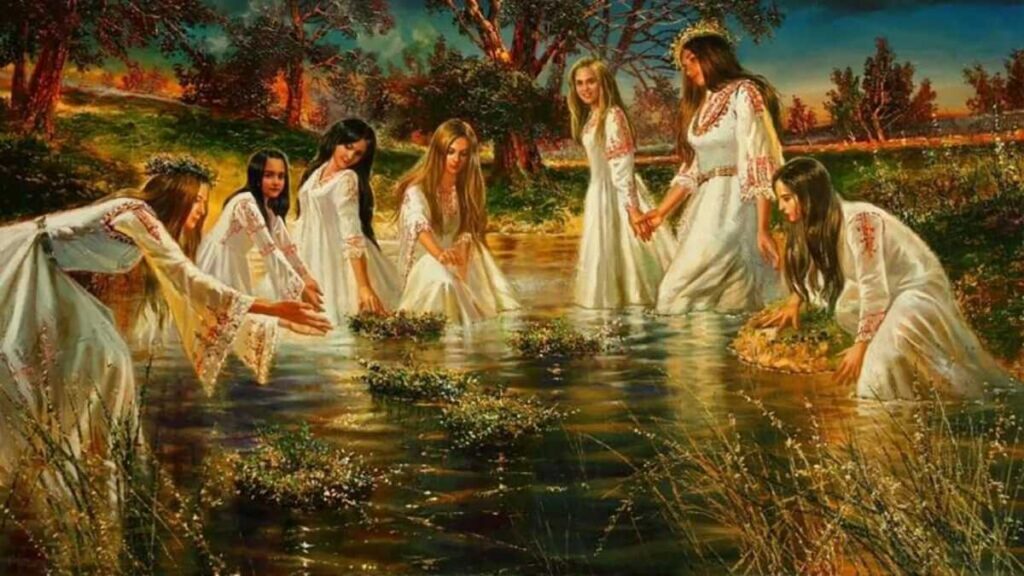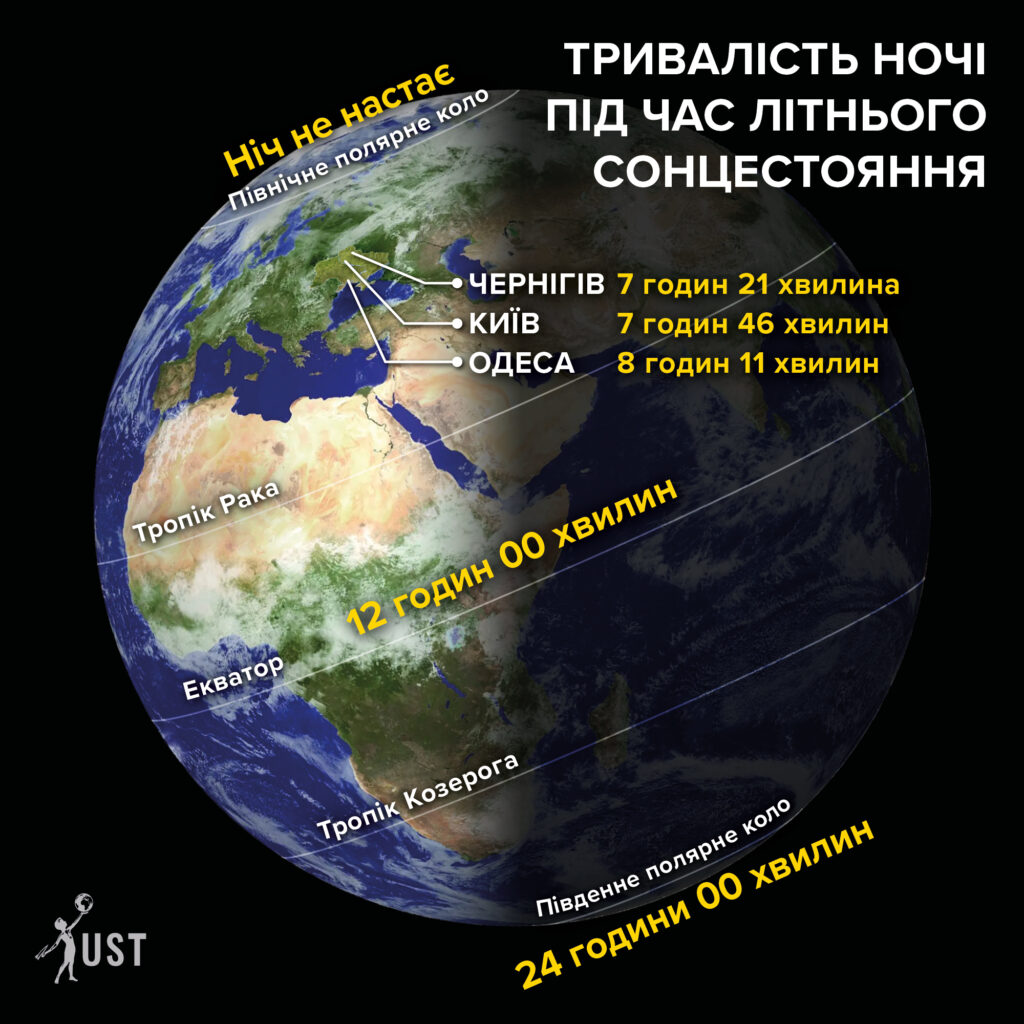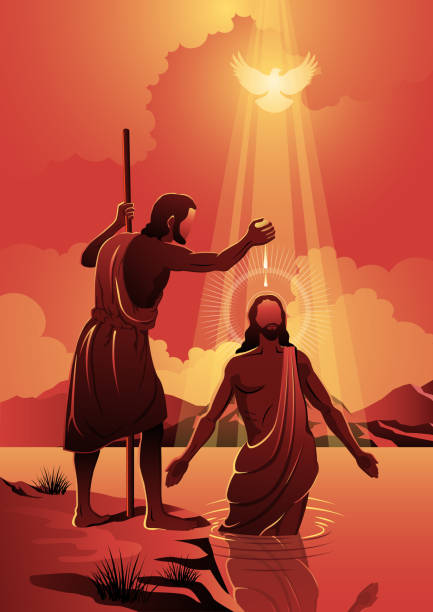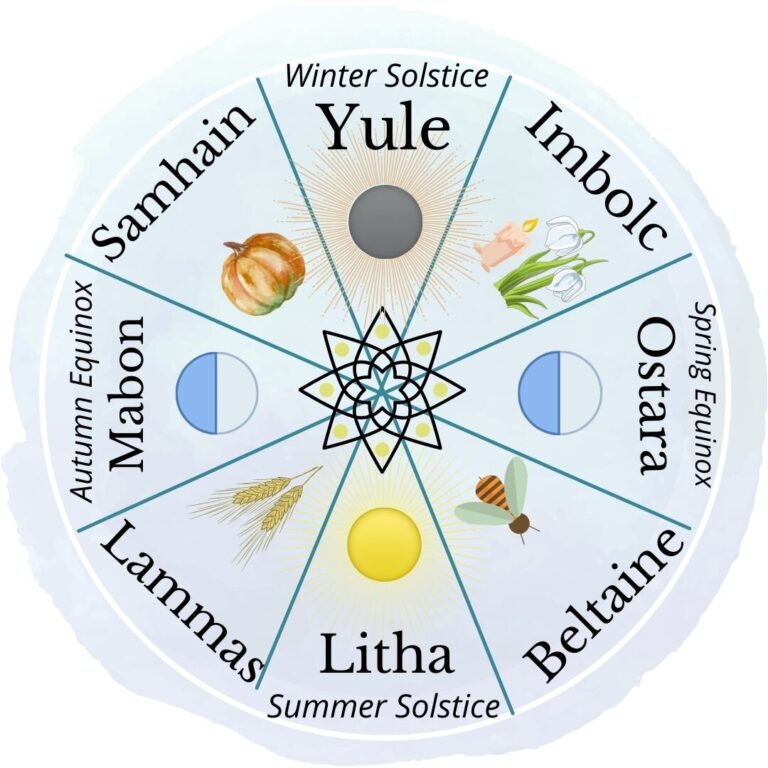On the night of July 7, people in Ukraine traditionally celebrate Ivan Kupalo. Starting from 2024, this holiday will be moved to June 24 due to the Ukrainian Orthodox Church transitioning to the New Julian calendar. Let’s talk about the connection between astronomy and pagan beliefs related to this holiday.

On what day Ivan Kupalo was celebrated
When it comes to celebrating Ivan Kupalo, things can get a bit complicated. Firstly, it’s important to note that there is no official holiday called “Ivan Kupalo”. Instead, there is a Christian holiday called the Nativity of St. John the Baptist, which is sometimes referred to as Ivan’s day (actually, Ivan is the Ukrainian variation of the name John) and has been celebrated on July 7 in the 20th and 21st centuries.
However, among the people, the night before this day, known as Kupalo Night, is much more popular. It is associated with various beliefs and rituals that have no connection to Christianity but are rather a continuation of ancient pagan traditions.
And all of this would be insignificant except for the Ukrainian Orthodox Church moved the celebration of the Nativity of John the Baptist to June 24 starting from 2024. Officially, this does not require moving the celebration of Ivan Kupalo to the night before that day, but it would be quite logical to do so. To understand why, let’s start from the beginning.
| CHANGES DUE TO INTRODUCTION OF THE NEW CALENDAR | ||
| The holiday | The old date | The new date |
| Christmas | January 7 | December 25 |
| Generous evening (Malanka) | January13 | December 31 |
| The Feast of St. Basil | January 14 | January 1 |
| Epiphany | January 19 | January 6 |
| Flower Sunday | Unchangeable due to association with the Easter | |
| Annunciation Day | April 7 | March 25 |
| Easter | Unchangeable | |
| Ascention | Unchangeable due to association with the Easter | |
| The Feast of St. George | May 6 | April 23 |
| Green Festivals | Unchangeable due to association with the Easter | |
| The Nativity of St. John the Baptist (Kupalo) | July 7 | June 24 |
| The Feast of Saints Peter and Paul | July 12 | June 29 |
| The Feast of St. Elijah | August 2 | July 20 |
| Makoviya | August 14 | August 1 |
| The Feast of the Transfiguration | August | August 6 |
| The Dormition | August | August 15 |
| The Feast of the Nativity of the Blessed Virgin Mary | September 21 | September 8 |
| The Feast of the Exaltation of the Holy Cross | September 27 | September 14 |
| The Feast of the Intercession | October 14 | October 1 |
| The Feast of St. Demetrius | November 8 | October26 |
| The Entrance of the Theotokos into the Temple | December 4 | November 21 |
| The Feast of St. George | December 9 | November 26 |
| The Feast of St. Andrew | December 13 | November 30 |
| The Feast of St. Nicholas | December 19 | December 6 |
The midpoint of summer
On June 21-22 the summer solstice occurs in the Northern Hemisphere when the night is the shortest and the day is the longest. Since ancient times, the Slavic people celebrated a pagan holiday dedicated to the light of the Sun and fertility during this time. They were not alone in this celebration, as it was observed by other nations as well, from the Celts to the Yakuts.
They had significant reasons for this celebration: the day, which had been increasing until then, started to shorten, and the harvest, which depended on the Sun’s favor, was ripening. It’s no wonder that the central figure of this celebration was a deity associated with the Sun. However, there is no consensus among scholars regarding the initial name of this deity.
The popular version now suggests that the deity was called Kupalo or Kupailo, based on a single chronicle record from the 17th century, which was made by a person far removed from the realities of this holiday.

It is much more likely that this deity was called Yarilo. At least, this is the name mentioned in earlier and more accurate chronicles. Nevertheless, the most important aspect of this holiday is that people loved it immensely. Even when Christianity arrived in Ukrainian lands, the Nativity of St. John the Baptist began to be celebrated on the day preceding the pagan mysteries and some of those traditions were preserved.
Mathematics of Christian holidays
It is difficult to determine the exact day of the pagan celebration since the modern calendar was brought to our lands by Christians. However, immediately after the adoption of the dating of the Nativity of John the Baptist, it began to be celebrated on June 24.
Why exactly on this day, and not, for example, on June 22, is hard to say. It is likely that a crucial point is the beginning of the decrease in the duration of daylight, which can be observed using primitive devices. After all, Christmas, which also replaced a pagan holiday, is celebrated not exactly during the winter solstice but a few days later, on December 25.
Simple calculations show that exactly six months separate the two most important birthdays in Christianity. Thus, everyone understands when and what should be celebrated to ensure that both Christian rituals are observed properly while not neglecting the pagan ones.

Regarding the name of the holiday, most researchers now agree that it received its name by analogy with the nickname of John the Baptist. “The Baptist” means “the one who immerses in water”, and Kupalo in Ukrainian may be interpreted in similar way.
Gregorian and Julian calendars
This system continued to exist until the 20th century when the flaw in the Julian calendar, used by both the Orthodox Church and the civil authorities, became glaringly obvious. The year in this calendar is 11 minutes shorter than the tropical year, resulting in a discrepancy of 13 days. You can read more about it here.
This discrepancy was particularly noticeable during Kupalo Night, which began noticeably later after the moment when the duration of the dark part of the day began to increase. Countries with predominantly Catholic and Protestant beliefs have been using the Gregorian calendar, which does not have this issue, for several centuries.

In our region, the introduction of this calendar was associated with the establishment of Soviet power, which was not recognized by the Church, so it continued to use the Julian calendar, which no longer coincided with the official calendar. Thus, June 24 became July 7. The discrepancy with astronomical circumstances persisted.
Finally, in 2023, a decision was made to transition to the New Julian calendar, which largely corresponds to the Gregorian calendar. Formally, the Nativity of John the Baptist, as it has been celebrated all this time on June 24, will continue to be celebrated on the same day. However, now this day — and therefore Kupalo Night — will be celebrated, for the first time in many centuries, exactly when they should be according to tradition: that is immediately after the summer solstice.
